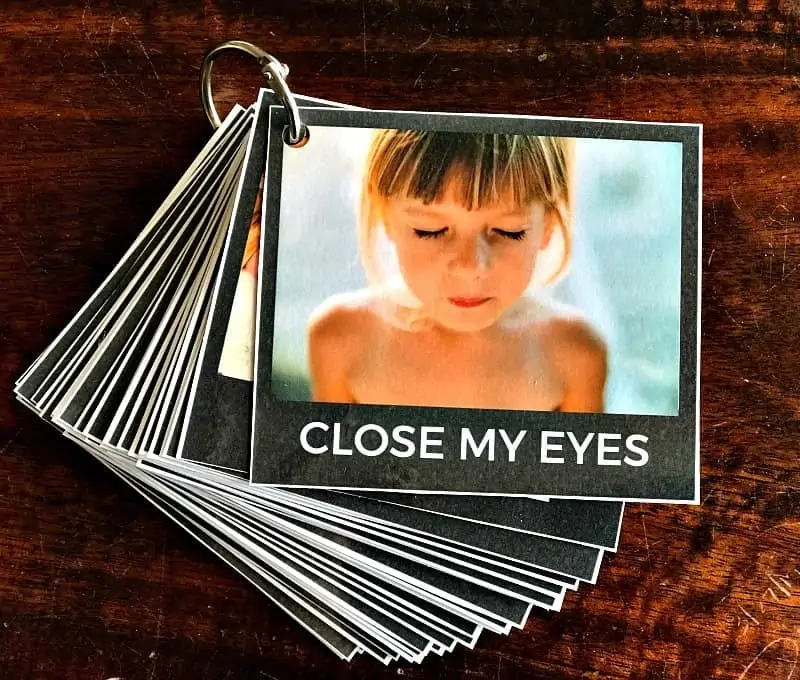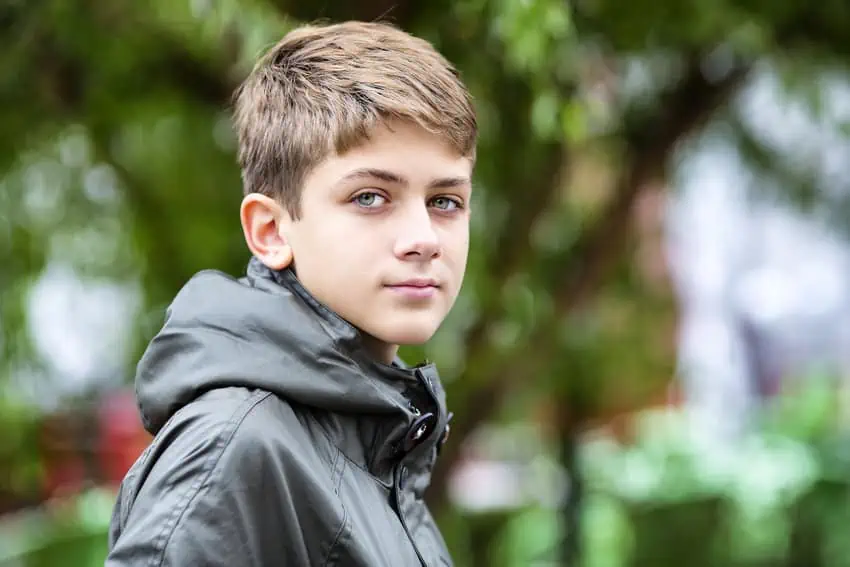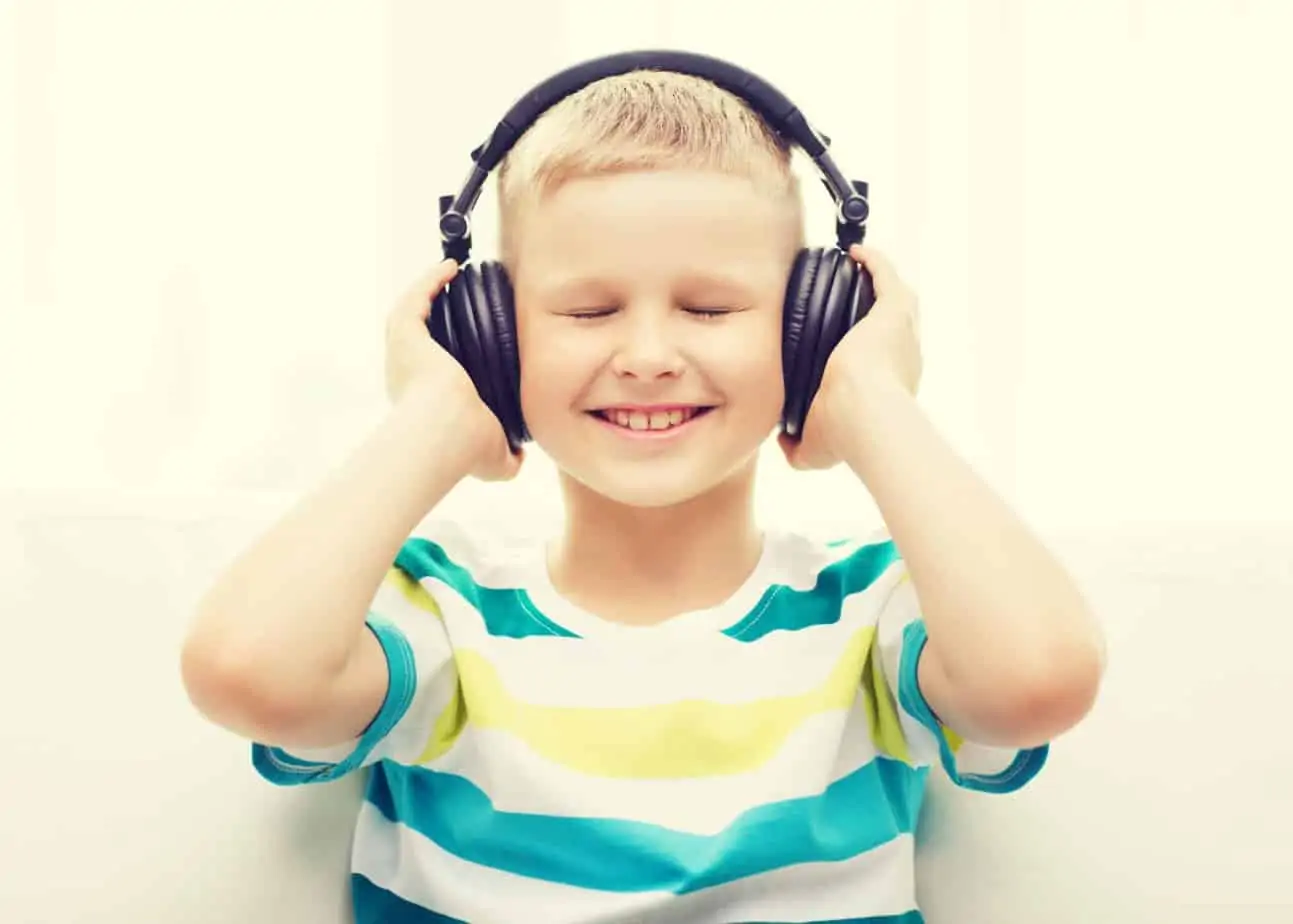Are you looking for a way to help calm your child whether it’s a tantrum, poor behavior, sensory, overstimulation or just as a safe, comfortable place for them to calm down? Learn how to create a cool off spot in your home to best help your child to calm down.
The Calm Down Toolkit helps kids develop calm down strategies and self-regulatory methods that work best for them, including mindful breathing and tracing patterns.

How to Create a Calm Down Spot for Your Child to Cool Off
When my son gets wound up, he has a difficult time calming down. When he’s overstimulated or eating something we don’t normally have in our diet, he acts out. Sometimes this is aggressively or he runs around the house faster than the Roadrunner.
When he’s upset, you might think the world is crashing down around him because of how loud he yells, screams and throws a tantrum.
Trenton is our strong-willed and emotional child who feels everything intensely. When he’s in fight or flight mode, his defenses are up and nothing I can say or do will be the right fix. At these times, before we had a calm area, there wasn’t much I can do to help my own child to calm down.
No amount of talking, hugging or showing empathy worked.
Now, when this happens, he goes to his Cozy Corner.
It’s a private, quiet space we’ve created that blocks out stimulation, noise and bothersome siblings. Our cozy corner is build inside his extra-large closet and it’s a place where his senses are no longer heightened, but soothed.
We call our space a Cozy Corner, but I’ve heard others name it a Quiet Corner, a Calm Down Space, Sensory Tent and Cool Down Spot.
Our quiet space isn’t just for my son to use; my two daughters also like to use the spot as a quiet space to be by themselves, to read and cool down from a tantrum. Not to be confused with a space for time-out if you use this discipline method, the cozy space you create for your child is to help their body and mind calm down and feel in control of their bodies once again.
Kids have different needs and sensory input they require to calm down, so what works for one might not work for all of your children. They could require different spaces and textures to match their needs.
Learn where and how to build your cool off spot and ultimately help your child to calm down.
PICKING THE RIGHT SPOT
A cool down spot is a specific, dedicated space in your home where your child feels safe and is able to calm down.
When you select your calm down space, take note of the noise and stimulation around the area. You want a place that’s quiet, isn’t near doors, electronics or heavy traffic ways in your home. Limiting the noise near the space will help your child regulate their sensory input and relax quicker.
This may be in a closet like ours, a tent, space between the couch and wall, under the stairs or quiet corner in a room of your home.
Wherever the space is you choose, you want this place to be semi-permanent so your kids always know where it is and can depend upon its location.
WHAT GOES IN A CALM DOWN ZONE?
Find help with the Calm Down Toolkit with self-regulatory techniques kids can choose from including mindful breathing patterns, affirmations and more.
Include the Soft Stuff First
Build the foundation of the space with soft, plush and weighted items for pressure and comfort. Layer the floor with blankets and several pillows (a firm body pillow is big and huggable and works great for a calm space). Bean bags work great too.
Weighted Blanket
If you have a weighted blanket, place this in the calming space. The pressure from the weight helps to calm senses. These weighted lap pads are wonderful to help with deep pressure input.
Chew Toys
Place a few items in a basket or bin in the Cozy Corner to help your child find relief. Chew toys or chewy jewelry are rhythmic and great for oral input.
Visual Elements Inside the Cozy Space
Kids who are able to focus on something, will decompress easier and faster. Visual elements may include hung Christmas lights or a strand of light, a star gazing light, lava lamps (or this awesome jellyfish lamp) or flashlights.
Create a calm down jar your kids can relax while they watch the movement and forms float around. Here’s a great tutorial of how to create a galaxy jar.
Sensory Bin
Items your child can touch and play with will help meet their touch senses when paired with the soft blankets, firm pillows and weighted blanket.
Sensory bins are easy to build and put in locking top bins. Sand, moldable sand, slime and a zen tray with rice are easy to build and tuck away in the Cozy Corner.
Fidget Toys
Look for simple fidget toys without all the bells and whistles that distract from calming down. Squishy balls, textured balls, liquid motion timer, or a full pre-made sensory bin like this one and throw it in the space for them to choose what they want to play with at that time. These water wiggles are a huge hit with all my kids.
Headphones
Depending on where your cool down spot is located, if noise is intrusive consider placing a set of headphones in the basket of items too. Headphones supply deep pressure and calming sensations by themselves, but can also be plugged into calming music if your child is receptive to this input.
Use Calm Down Cards
Calm Down cards are a great tool to give kids options about how they can calm down, and when they have the choice of what they want to do, it’ll help them calm down even faster!
Print this set of calm down cards, laminate if you can, and let your child shuffle through the 45 cards until they find a solution they’re comfortable with.
There are 45 kid-tested methods that will help them cool off when big emotions take hold!
The best part?
With consistent practice of using the calm down card set, kids will turn to their set of calm down cards without any prompting from an adult and begin to self-manage their big feelings all on their own!
Need a little extra handling your child’s big emotions? Here’s a FREE Parenting Course to help you both turn things around.
KNOWING WHEN TO USE THE COZY CORNER
The cozy space you create is not a place to send your child for punishment such as a time-out, but it shouldn’t ever be a place you force them to go either.
Offer the space as a suggestion when you notice they are getting worked up, or their emotions are beginning to build and you see a tantrum or big behavior starting to arise. Suggest the space before your child hits a disruptive point, but encourage it’s use as a place to take a break, to calm down and to feel better.
Over time, your child will see the space as a positive place for them to gain control of their bodies and emotions.
Instead of butting heads with my son, or reaching the point of no return, he knows he has a safe space to go to calm down. Where we once had a battle of words or full-fledged tantrums and I’d carry him kicking and screaming for a break, we can both recognize when it’s time to go to his safe space to cool off.
You Might Like…
- 6 Ways to Make Exercise Fun For Your Kids
- Learn the Magic Number of Times You Need to Say Yes for Every No
- 10 Ways to Rock Being a Stay-at-Home Mom
- How to Create a Positive Home (And Why this Will Affect Your Kids Forever)
- 9 Ways to Build Your Child’s Confidence
- Stop Saying “Good Job” and What to Say Instead
Want even more?
Shop All Parenting Resources
Shop all of our parenting resources from self-regulation tools and managing big emotions to building self esteem and confidence. There are resources for all seasons of life!








It’s so important for a kid to have a place like this. While ours doesn’t always stay out because we don’t have the space for a permanent one, I will build our little man a fort like thing, and make sure he knows no one is allowed but him, unless he wants it, so he can feel like he’s got a little bit of control over the situation. That usually leads to big brother coming in, and some sort of a snack, and action figures and before long, it’s all back to normal.
Found you on a link party!
It’s important for kids to have their own space. No only a calm space but something that feels like it’s theirs. We’re two weeks into summer and ours is getting some use lately 🙂
I loved your article so much. I am a Montessori teacher and would like with your permission to print this for all of my parents.
Are you able to send me a pdf? when I try to print your article is cut off on the ends.
Thank you for your help
Rosalinda Turner